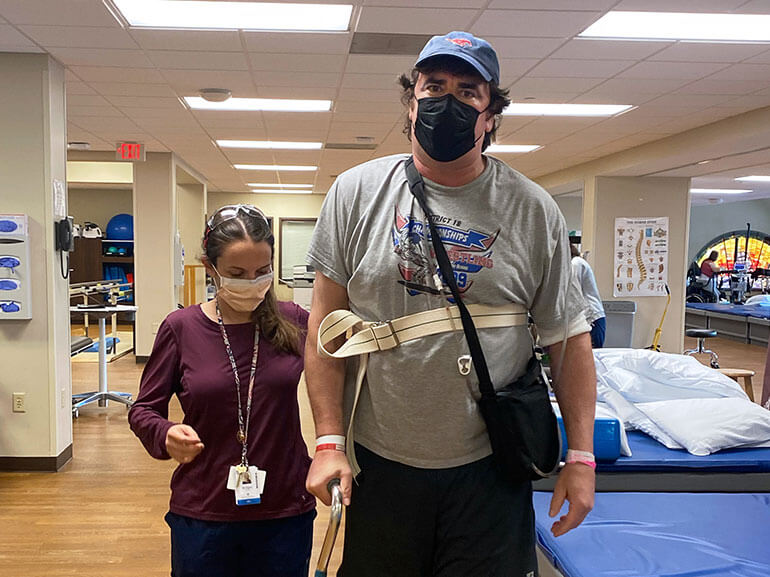Murphy's Story

Orthopedic Rehabilitation
Louis “Murphy” Johnston is a healthcare veteran, working closely with doctors during pacemaker placement procedures for more than 25 years. When Murphy developed intense hip pain, he then became the patient and underwent extensive testing that revealed a deep bone infection caused by a large, benign tumor.
He immediately began an intensive course of antibiotics, but it failed to curb the infection. With no other options, Murphy underwent a total hip replacement.
Murphy faced a long road to recovery and chose Baylor Scott & White Institute for Rehabilitation (BSWIR) – Dallas for his rehabilitation.
When he arrived at BSWIR - Dallas, Murphy needed assistance with basic self-care activities, including dressing, showering and even getting in and out of bed. He was unable to walk independently or climb stairs. However, Murphy was highly motivated and ready to work hard – especially since he’d been this route before, having had previous back, knee and hip surgeries. He also understood the benefits of rehabilitation based on his professional background and was fully committed to individualized treatment program his BSWIR team put in place.
Things were off to a great start, but came to a crashing standstill when Murphy’s surgeon told him he needed another hip surgery followed by vacuum-assisted wound treatment. Murphy persevered, picking up right where he left off as soon as he was medical stable.
The rehabilitation nurses at BSWIR helped manage Murphy’s wound and his physical and occupational therapists were key to getting him moving. Gait training and other exercises helped build his strength, balance and endurance, allowing Murphy to stand, then take a few steps and eventually walk on his own with a cane. His physical therapists also helped him learn to climb stairs safely and with minimal assistance. Thanks to his occupational therapists, he regained his confidence and independence in performing self-care and other daily activities.
“It depends on where you start, but the therapists are willing to push you as hard as you’re willing to go,” he said.
His physical therapist, Bridget Denicola recalled that “When we began, I had to help Murphy move his leg EVERY step while he walked. Now he runs circles around everyone using a cane. I’m so proud of his progress and hard work.”
Murphy was similarly proud of his progress and thrilled to return home to his family and get back to work helping patients instead of being one.